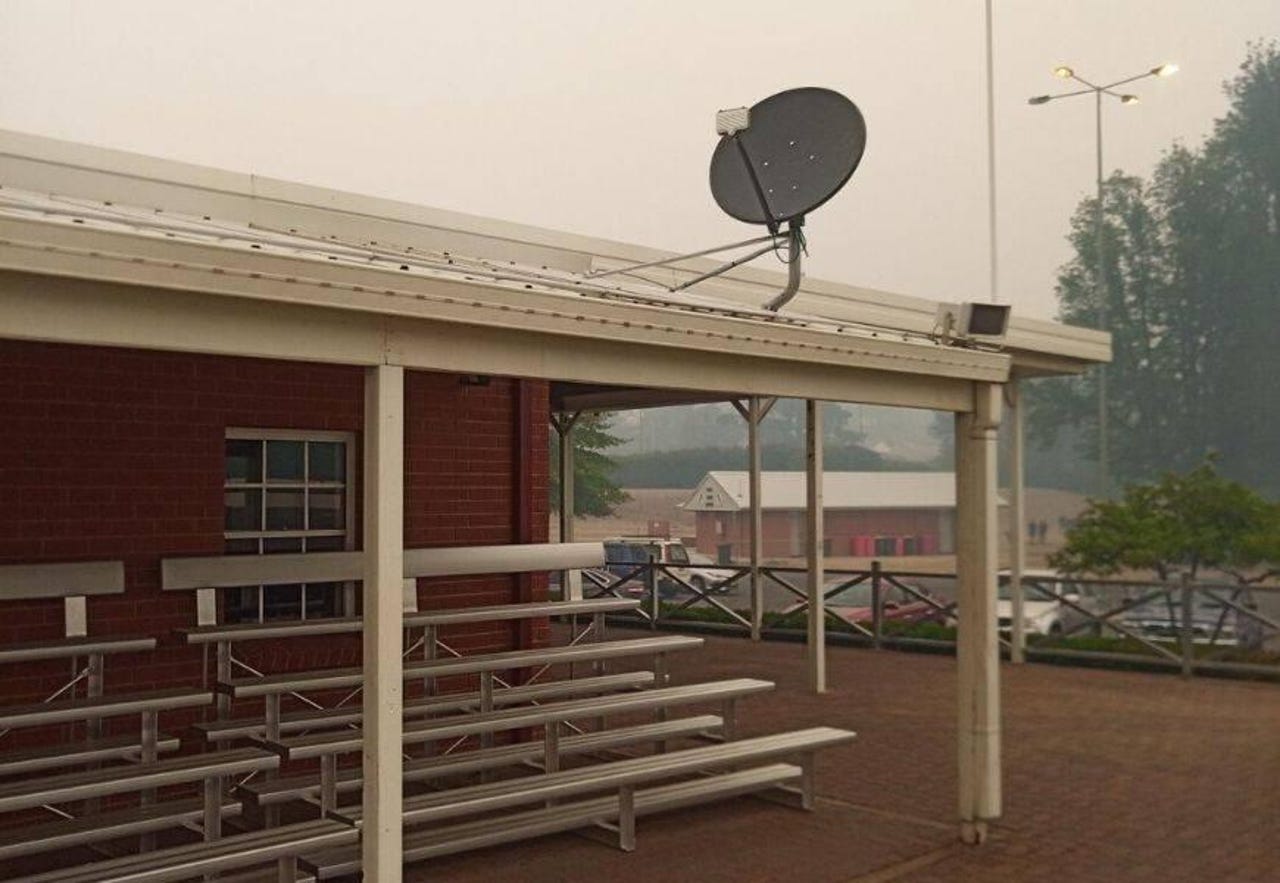NSW and NT miss out on new NBN disaster services sites in 2020


Emergency site in Cooma, New South Wales.
The company responsible for the National Broadband Network (NBN) has taken the wraps off its first disaster satellite service at Namadgi in the Australian Capital Territory.
NBN has been handed AU$7 million to provide "designated emergency management sites and evacuation centres" with satellite connectivity. The company is aiming to have around 95 sites up and running by the end of 2020.
Broken down by state or territory, the ACT will have 12 sites at Namadgi National Park Visitors Centre, Tidbinbilla National Park Visitors Centre, Hall RFS Base, Guises Creek RFS Base, Southern Districts RFS Base, Tidbinbilla RFS Base, Rivers RFS Base, ESA Training Centre, Murrumbidgee Parks and Conservation Service Depot, Bendora Dam Parks and Conservation Service Depot, Glendale Parks and Conservation Service Depot, and Gudgenby Homestead Parks and Conservation Service Depot.
Queensland will have 14 sites live by the end of the year at Biloela Civic Centre, Collinsville Community Centre, Gloucester Sport and Recreation Building, Mackay Entertainment and Convention Centre, Bob Wood Hall, Sarina, Kianga Hall Moura, Robert Schwarten Pavilion, Taroom Town Hall, Cooktown Event Centre, Bundaberg Multiplex Sport and Convention Centre, Bundaberg Recreational Precinct, Ingham Showgrounds Pavilion, and Townsville Stadium.
South Australia is set to have eight sites at Victor Group Base, Kangaroo Island Group Base, Tatiara Group Base, Gambier Group Base, Kingscote Station, Loxton SES, Mallee Group Control Centre, and Netley SES.
Tasmania's 16 sites in 2020 will be situated at Lilydale Memorial Hall, Wynyard Sports Centre, Swansea Town Hall, Mathinna Recreation Ground, Karoola, Miena Community Hall, Huon Valley PCYC Building, Elma Fagan Community Centre Waratah, Pyengana Hall, Currie Town Hall, Sorell Memorial Hall, Sheffield Kentish Town Hall, Alonnah Hall, Redpa Recreation Centre, Queenstown Sports Stadium, and Nubeena Recreational Ground.
Victoria will also have 18 sites ready this year at Bairnsdale City Oval, Cann River Rec Res, Paynesville Rec Res, Mallacoota Main Hall, Omeo Rec Res, Buchan Rec Res, Lakes Entrance Mechanics Hall, Cudgewa Temporary Community Support Hub, Licola Wilderness Village, Towong Temporary Community Support Hub, Tintaldra Temporary Community Support Hub, Myrtleford Sports Stadium, Orbost Cricket Club Oval, Myrtleford Senior Citizens Centre, Ovens DELWP Office, Mitta Valley ERC, Lucyvale/Berringama Temporary Community Support Hub, and Eskdale ERC.
Western Australia will have seven sites at Walpole Community Hall, DFES Broome, Jurien Bay Football Oval, LG Shire Office, Bremer Bay Sports Club, Leeman Sports Oval, and Peaceful Bay. The state also has an additional site labelled by NBN as private.
Missing from the list of sites are locations in New South Wales and the Northern Territory, which are set to be completed next year, with NSW, in particular, having non-standard installations. NBN said the installation dates were agreed upon by federal and state-level governments.
NBN also received AU$1.7 million to buy five more Muster trucks and 12 portable satellite kits, which will be delivered this year.
"This equipment can be rapidly mobilised to support communities with Wi-Fi connectivity when they are most in need and are strategically placed around the country so they can be deployed as soon as it is safe to do so," the company said.
Gavin Williams, NBN's chief development officer for regional and remote, said the company deployed emergency satellite links at 30 evacuation centres and 10 emergency response centres in NSW, Victoria, and South Australia last year to help 5,000 people.
"The devastation of last summer's bushfire emergency reinforced the importance of connectivity in disaster situations and the important role NBN Co can play with the retail service providers in supporting communities when they are most in need," he said.
"By providing free satellite Wi-Fi services and mobile device charging facilities during the emergency, we were able to help keep families and loved ones connected, and provide vital communication services into areas that otherwise might not have had them."
Related Coverage
- ARENA throws cash at trialling small wind turbines to power telco towers
- NBN lands a further AU$1.2 billion of debt at 1%
- Australia's telco and energy sectors agree to boost infrastructure resiliency
- Optus and ANU to throw satellites, drones, and robotics at Australian bushfires
- NBN launches satellite backup for business customers
- NSW bushfire inquiry calls for use of more advanced drones and remote sensors
- Australian bushfires impacted 1% of all NBN services